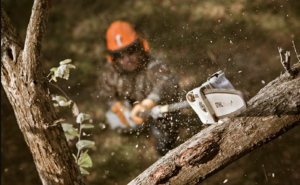Every plant should be treated differently. Whether it’s flowers, trees or potted plants, they all need your help to remain truly healthy. Learn how to prune your vegetation based on what it needs and visit Foreman’s any supplies you may need.
Oak, Birch and Other Trees
Many trees, like oak trees, can be pruned during mid to late winter, while the best time to prune birch trees is late summer or early fall to avoid sap flows. In both cases, the goal is to remove branches that are either dead or damaged, or branches preventing the tree to grow and get proper sunlight. Young trees can be taken care of with a hand pruning saw while mature trees will require the use of a pole pruner or a chainsaw. When it comes to trimming and shaping ornamental trees, you can turn to battery-powered garden shears.
garden shears.
Pruning Tomatoes
If you choose to prune your tomato plants, it is best to begin when they reach about one to two feet in height. If the plant is smaller than this, it may not be able to recover from the shock of pruning.
Between the main stem and offshoot branches, there will be small leaves that grow where the two meet. Typically called “suckers,” these small branches should be pruned using a sharp, clean pair of STIHL hand pruners.
The best time to prune tomato plants is early in the morning when the weather is dry.Helpful tip: Looking to increase your tomato yield? Planting pruned tomato suckers can help create more tomato plants quicker than starting from seed.
Roses
Using pruning shears, begin pruning from the base of the plant and cut to allow the center of the plant to receive light. As with other plants, you’ll want to remove damaged branches and other weeds from your roses. The best time to prune roses depends on the variety, but most rose pruning is done in the spring. However, you should avoid pruning knockout roses in the late summer and early fall.
 Apple and Other Fruit Trees
Apple and Other Fruit Trees
The best time to prune apple trees is late winter or early spring, before it starts blooming. Cut off any dead, diseased or damaged wood and downward-growing branches. Make sure you use the right tools, like loppers or hand pruning saws to create proper pruning cuts. Clean up any suckers, sprouts and other undesirable branches growing on the trunk. In addition, remove branches that are crossing paths with one another. Thinning out your fruit tree will help in spacing branches in order to take up sunlight and produce healthy fruits. To prevent branches from snapping under the weight of the fruits, prune back from the tip of the branch.
-Article courtesy of STIHL



